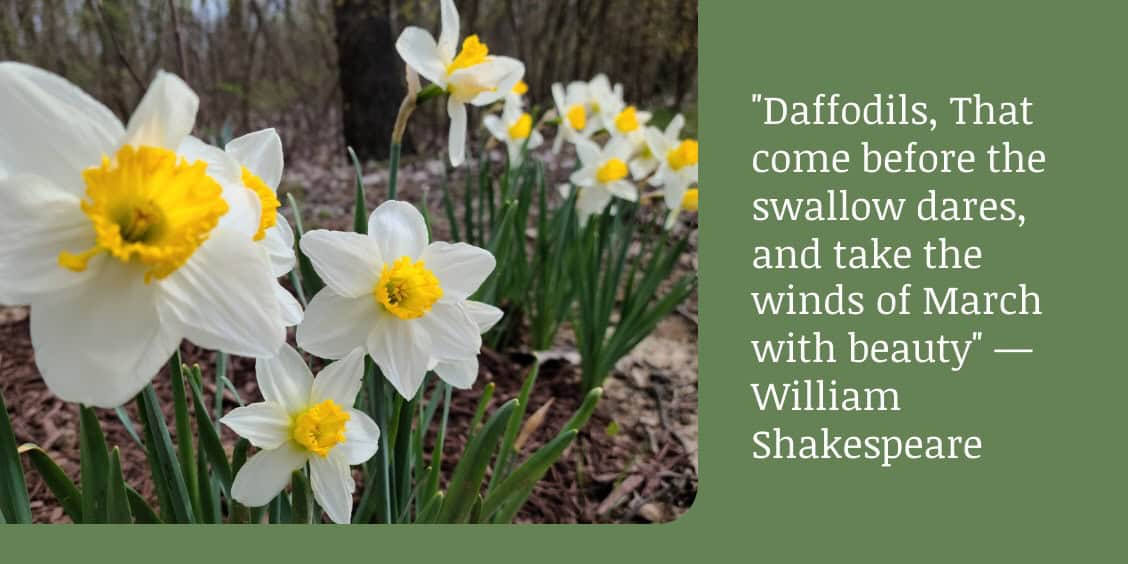
I have heard more than a few people saying that they are really ready for spring, and I can’t say I blame them! The bitter cold we saw for much of January and well into February have made getting outdoors a challenge for many of us – who wants to deal with all those layers of clothes?! There is hope though – the temperatures are going up (ok, maybe not today, but there’s hope in the upcoming week) – the daylight hours are increasing, and the spring birds are starting to head our way. I’m trying not to get too impatient for spring to truly arrive, but it’s so hard!
Jennifer
This month’s issue of Let’s Get Gardening
Subscribe to our monthly newsletter for seasonal gardening advice and recommendations for your garden, yard, and bird feeding.
While we’re waiting, patiently or otherwise, for spring to come, there are still many things we can do:
Indoors:
- Get your garden planned now, so that you know what you need to make that plan come to fruition. Do you have all the seed varieties you need? Do you have seed-starting supplies? What about soil, plant food, pots, plant markers, and supports? You may not need to have all of those things right away, but knowing what you need will make it easier to pick things up as you come across them, or to take advantage of sales, like our Seed and Seed-Starting Supplies sale, going on throughout the month of March.
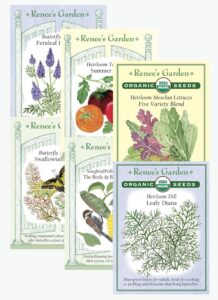
- Start seeds this month. If you haven’t already started parsley and rosemary seeds, don’t wait, as both can take some time to germinate. Broccoli, Brussels sprouts, cabbage, cauliflower, head lettuces, and kale should be started mid-month, along with most herbs. Basil can wait until the end of the month. Peppers and eggplant can be started mid- to late-March, but tomatoes can wait until early April.
- Early- to mid-March is the time to start zinnias, and mid- to late-March is the time to get amaranth, catmint, cleome, gaillardia, nigella, stock, and thunbergia started. Echinacea should be started by the end of the month.
- Are you itching to do some gardening now? Scratch that itch by repotting any of your indoor plants that have outgrown their current pots. When repotting, the new pot should only be a few inches in diameter and depth larger than the old pot. Fine Gardening has some good tips on how to repot plants. When repotting, consider dividing larger plants so that you don’t end up with a huge plant in a really heavy pot.
- If you stored tender bulbs, such as dahlias, over the winter, check them now and discard any that are soft, damaged or diseased.
- If you potted bulbs for forcing last fall, check their progress. When your bulbs get a few inches of growth, it’s time to move them into a cool (60 degrees) sunny spot, but not in direct sunlight. Once they have flowered, move them into a warmer spot, but keep them out of direct sunlight to help the blooms last longer. For even longer lasting blooms, provide cooler nighttime temperatures.
Outdoors:
- As tempting as it is to get out and get to work in the yard and garden, stay off the lawn and out of garden beds as much as possible while the ground is wet. Wet soil is easily compacted by walking on it at this time, and compacted soil doesn’t drain well, which means it will be wetter even longer.
- On drier days, do take a walk around and look for plants that may show signs of frost heave. This occurs when wet soil freezes and expands, causing the roots of your plants to push up and out of the soil, which can be harmful or even deadly to your plants. Gently press them back down into the soil and then cover them with a good layer of mulch to help prevent this from happening again.
- While you’re out checking for frost heave, pull any weeds you find in your flower beds. This will make the spring chore a little easier, and it gets you outdoors and in the garden – as long as the ground isn’t too wet!
-
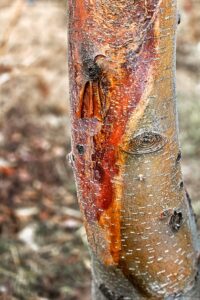
Also look for damage done to trees and shrubs by weather and animals. Prune off any damage you find, if possible. One problem you might encounter this year, because of the extreme cold we had, is cracks in tree bark and possibly into the wood of the tree itself.
- It’s getting a bit late for any major pruning work for many trees and shrubs, so for now, only prune dead or damaged branches, to avoid promoting early growth in trees and shrubs starting to come out of dormancy as we warm up. We will still be getting some significant cold temperatures, and any new growth will be vulnerable to those cold temps. Don’t prune flowering trees and shrubs that bloom in the early spring yet (forsythia, azalea, quince, witch hazel, lilacs, etc.).
- If you haven’t tested your garden or lawn soil in a few years, you might want to consider it this month. Doing a soil test can help you know what your plants or grass need before you start adding fertilizers. We carry a couple of very good at-home test kits at the store, or you can send away for a more comprehensive test kit from the Michigan State University Extension Service.
Birds:
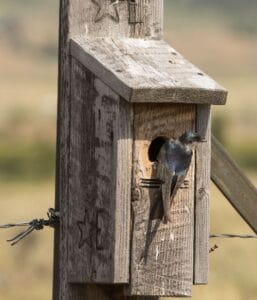
- Bird migration time is already starting, and many of our migrating birds will be returning to Michigan this month, looking for places to nest. Providing them with food, water, and shelter will get them to hang around in your yard – which is great for a few reasons. Birds can be very entertaining to watch, and can provide you with hours of fun, but the best reason to encourage them to call your yard home, if you’re a gardener, is that they eat lots of insects!
- If you’d like to get some sense of where birds during migration season, and when they might start showing up in your backyard, check out the Migration Maps from BirdCast. One of the cool things that are made very obvious from these tools is that a great deal of migration happens at night. That’s one good reason to keep outdoor lights off overnight, and to minimize the amount of light being cast outdoors from indoor lights.
- Keep feeding the birds! Providing food at this time of year not only helps those tired migrating birds regain their strength, but also helps them keep up their energy as they are looking for nesting spots and finding nesting materials. Did you know that some male wrens will build as many as 3 to 10 nests to show off to prospective females? They need lots of energy to do that!
Read More
More info on all of these tips can be found in our monthly newsletter: Read the full March 2025 issue of Let’s Get Gardening
Happy Gardening!
March Seed and Seed Starting Supply Sale!
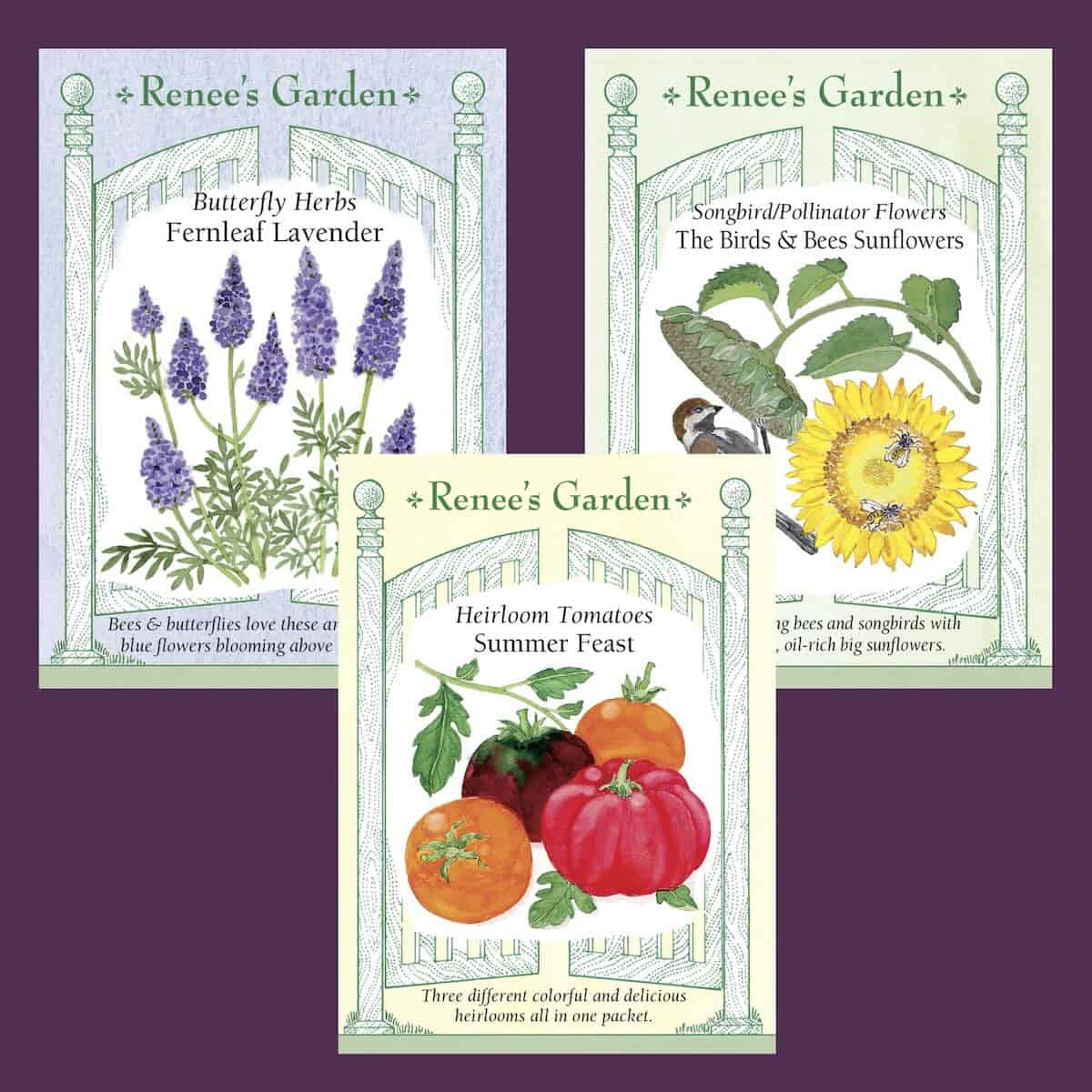
20% Off In-Store and Online!
Did You See the News?!
This March, Your Gift Certificates Are Worth 10%More!🎉
For the entire month of March, fully redeem any gift certificate dated before January 1, 2025 and get an extra 10% added to its value!
Don’t miss out on this limited-time bonus. Get ready for Spring at The Garden Mill this March, when your gift certificate dollars go farther!
📅 Offer valid March 1st thru March 31st 2025, In-Store Only
*If you have misplaced a Garden Mill gift certificate, we might be able to retrieve it for you at the store. Come in and ask us – we can’t guarantee that we will be able to find it for you, but it’s very possible that we can!*
$10 off any $50 purchase

Expires 3/31/25
Cannot be combined with any other offer.
Not valid on artist consignment items.
Cannot be used to purchase gift certificates.
